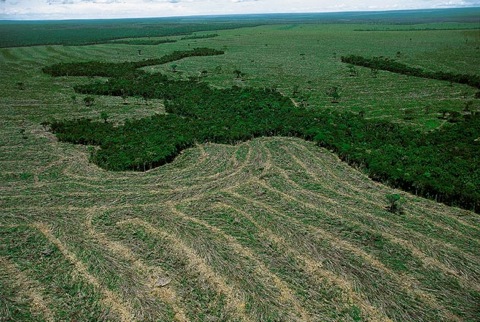Key words :
climate change,
sustainability
,climate change
,ngos
,digital globe
,esri
,google earth
,gordon and betty moore foundation
,jane goodall institute
,lilian pintea
Google, Jane Goodall, forests and the cloud
28 Dec, 2009 10:59 am
Not long ago, the only people who could access and analyze satellite images of the earth were government officials, the military, well-equipped scientists and oil, gas and mining companies.
Today, anyone with a computer and Internet connection can access to Google Earth. Since its introduction in 2005, Google Earth has become a powerful tool for scientists, activists and ordinary citizens who want to better understand, monitor and communicate about the environment.
 |
Today, anyone with a computer and Internet connection can access to Google Earth. Since its introduction in 2005, Google Earth has become a powerful tool for scientists, activists and ordinary citizens who want to better understand, monitor and communicate about the environment.
On my way home from Copenhagen, I learned about these new developments from Lilian Pintea, who is the director of conservation science at the Jane Goodall Institute, which is best known for its pioneering research on chimpanzee behavior. We met when we missed a connection in Geneva, so we arranged to have dinner during the layover.
You could say that Lilian, who is 38, has already lived through two democratic revolutions. A native of Moldova, he was studying ecology in Moscow when the Soviet Union collapsed in 1991. He subsequently came to the U.S. as a Fulbright scholar and earned a PhD in conservation biology from the University of Minnesota. As a specialist in geographic information systems (GIS) and remote sensing, he has watched technology that was once reserved for elites in the developed world spread to the rest of the world, including remote villages in the global south.
“As a biologist, I was always frustrated that I was in the middle of a lake or forest and I would collect my data, and I didn’t know what was happening a few kilometers away,” Pintea says. Now, satellite images reveal landscape patterns that simply aren’t visible from the ground—evidence of illegal logging or gradients in deforestation. “You can then look for political, social economic and ecological factors that explain the pattern,” Pintea says.
Lilian, who lives in Maryland and works the northern Virginia suburbs of Washington, travels frequently to Tanzania and Uganda.
“One problem which we often face in our project areas is the lack of capacity,” he told me. “Every trip to Africa, I do training…We want to empower local communities and governments to take charge and manage their lands.”
In places were traditional land tenure systems are breaking down, the technology had help settle boundary disputes. “Sometimes people don’t agree on where their village begins and ends,” he said. Not surprisingly, geospatial technologies are also used to better understand the relationship between chimpanzees and their habitats.
If all goes well, the Google mapping tools announced in Copenhagen will enable communities to generate accurate and timely information about their forests. That’s crucial to a financing mechanism known as REDD (Reducing Emissions from Deforestation and Degradation), which is designed to prevent deforestation. Regular readers of this blog know that emissions from tropical deforestation account for about 17% of global warming pollutants, more than all of the world’s cars, trucks, trains, boats and planes.
The government of Norway, a major backer of REDD, has given the Goodall Institute a $2.7 million grant to equip and train villagers in western Tanzania and their institutions to prepare for REDD. Google programmers including Rebecca Moore, an evangelist for Google Earth Outreach, visited the region last fall to train Goodall Institute staff, village forest monitors, local government officials, university staff and others to gather data, take pictures and upload their findings to “the cloud”–meaning the Internet, where powerful software and data are stored..
“It’s still a work in progress but we are already doing it,” Lilian told me. “They’re mapping the forests and monitoring the threats.”
The number of scientists, NGOs and companies working on GIS and forestry issues is impressive: Students and professors at the University of Washington have created free software called ODK (Open Data Kit) that makes it easy to collect survey data and upload it from Android phones. Digital Globe, an imagery and information firm based in Longmont, Colorado, gathers more detailed satellite images than those available on Google. ESRI, a software firm based in Redlands, Ca., is the world leader in GIS, proving tools to build geospatial infrastructure. For its part, Google collaborated with Greg Asner of Carnegie Institution for Science, and Carlos Souza of Imazon to build its newest platform, and it got support from the Gordon and Betty Moore Foundation.
In my job, I hear a lot of blah-blah-blah about the importance of public-private partnerships. Usually that means a nonprofit wants a business to write a check.
Here you have businesses, NGOs and communities combining their brainpower, passion and knowledge to do vital work. That’s exciting.
Originally published at Marc Gunther.com
1 comment(s)
[1]
Comment by StevenSteven Earl Salmony
10 Jan, 2010 07:44 pm
The human family cannot keep recklessly overproducing unnecessary stuff, hyperconsuming and excessively hoarding limited resources, and overpopulating the planet as the leaders in our not-so-great generation are advocating so adamantly. Everyone in the human community appears to be implicated in the work at hand of finding a different way from the patently unsustainable "primrose path" set out by those who extol the virtue of greed and arrogantly proclaim that their greed-mongering is God's work. The most dangerous fraud consciously perpetrated in our midst is the widely shared perception that insatiable avarice is an inherent aspect of human nature. Unbridled greed may rule the world in our time but such behavior is contrived ..... a willful, foolish and selfish result of a consensually validated misperception of what is real about the nature of being human, I suppose
 Alert Moderator
Alert Moderator






